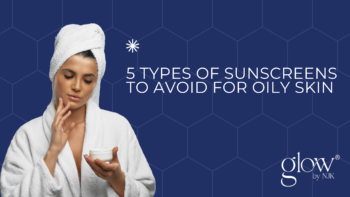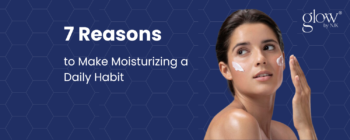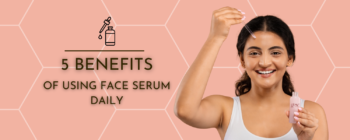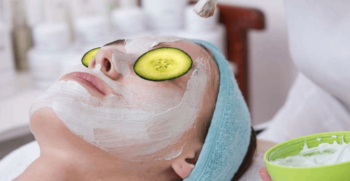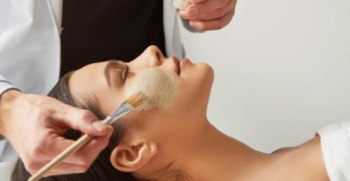Introduction
Maintaining clear, healthy skin requires selecting the correct cleanser!
Agree?
We all know that it’s critical to understand your skin type and its particular requirements.
This in-depth article helps you find the right cleanser for each kind of skin by providing information on different cleanser kinds, essential components to search for, and optimal methods for creating a successful skincare regimen.
By exploring the properties of many skin types and the workings of different cleansers, you will acquire the understanding required to make well-informed decisions on your skincare routine.
Let’s look into this in detail!
Determining Your Skin Type
1. Normal Skin

Definition and characteristics: Normal skin is well-balanced, neither oily nor dry. It typically has small pores, good blood circulation, and a healthy complexion without excessive sensitivity or blemishes.
Recommended cleanser types and ingredients: Normal skin can benefit from various cleansers, including gentle foaming cleansers, cream cleansers, and gel cleansers. Look for glycerin, ceramides, and antioxidants to maintain hydration and protect the skin barrier.
2. Dry Skin
It is really very difficult to figure out the best facial cleanser for dry skin. If yes, here is what you should read
Definition and characteristics: Dry skin lacks moisture and often feels tight or itchy. It may appear dull, flaky, or rough, with visible fine lines and a tendency to develop redness or irritation.
Recommended cleanser types and ingredients: Creamy or oil-based cleansers are best for dry skin as they provide nourishment and hydration while cleansing. Look for hyaluronic acid, butter, and botanical oils to soothe and replenish dry skin.
2. Oily Skin

Definition and characteristics: Oily skin produces excess sebum, leading to a shiny complexion, enlarged pores, and a higher risk of acne breakouts and blackheads.
Recommended cleanser types and ingredients: Foaming or gel cleansers are good for oily skin as they effectively remove excessive oil and impurities without over-drying. Ingredients like salicylic acid, cleanser for oily skin, benzoyl peroxide, and clay can help you control oil production and prevent breakouts.
4. Combination Skin
Want to choose the right face wash for combination skin? You are at the right place
Definition and characteristics: Combination skin features a mix of oily and dry areas. It’s common for the T-zone (chin, nose, and forehead) to be oily, although cheeks might be normal or dry.
Recommended cleanser types and ingredients: Gel cleansers are often suitable for combination skin as they clean oily areas without stripping moisture from drier parts. Look for balanced formulations that address oily and dry areas without causing imbalance.
5. Sensitive Skin
Definition and characteristics: Sensitive skin is easily irritated by environmental factors, skin care products, or temperature changes. It may react with redness, itching, burning, or stinging sensations.
Recommended cleanser types and ingredients: Gentle, fragrance-free cleansers like aloe vera, chamomile, and oat extract are best for sensitive skin. Avoid harsh chemicals and potential irritants to minimize the risk of adverse reactions.
Types of Cleansers: Finding the Perfect Match
A. Foaming Cleansers
1. Mechanism of action
How foaming cleansers work: Foaming cleansers contain surfactants that create a lather to remove dirt, oil, and impurities from the skin’s surface.
Benefits and drawbacks: Foaming cleansers effectively cleanse oily skin, but they may be too drying for dry or sensitive skin, leading to irritation or over-stripping of natural oils.
2. Suitable skin types and conditions
Best for: Considerations for dry or sensitive skin: Those with dry or sensitive skin should use foaming cleansers cautiously as they may cause further dryness or irritation.
B. Cream Cleansers
1. Mechanism of action
How cream cleansers work: Cream cleansers have emollient-rich formulations that dissolve impurities while providing hydration and nourishment to the skin.
Benefits and drawbacks: Cream cleansers are gentle and moisturizing, making them ideal for dry and sensitive skin, but they may not be as effective at removing oil or makeup as other cleanser types.
2. Suitable skin types and conditions
Ideal for: Cream cleansers are ideal for dry and sensitive skin as they provide hydration and soothe irritation.
Considerations for oily or acne-prone skin: facial cleanser for oily skin
skin may find cream cleansers too heavy and prefer a lighter, more clarifying formula.
C. Gel Cleansers
1. Mechanism of action
How gel cleansers work: Gel cleansers have lightweight formulations that effectively remove dirt, oil, and makeup without leaving a residue.
Benefits and drawbacks: Gel cleansers are suitable for normal, oily, and combination skin types as they cleanse thoroughly without over-drying, but they may not provide enough hydration for dry or sensitive skin.
2. Suitable skin types and conditions
Gel cleansers are best suited for normal, oily, and combination skin types as they effectively remove excess oil and impurities.
Considerations for dry or sensitive skin: Those with dry or sensitive skin should choose a gel cleanser with hydrating ingredients and avoid formulations with harsh surfactants.
D. Oil Cleansers
1. Mechanism of action
How oil cleansers work: Without stripping the skin, oil cleansers employ oils to breakdown and get rid of oil-based pollutants like sunscreen, makeup, and extra sebum.
Benefits and drawbacks: Oil cleansers are gentle and moisturizing, making them suitable for most skin types, but they may not be the best choice for very oily or acne-prone skin.
2. Suitable skin types and conditions
Suitable for: Oil cleansers work well on most skin types, but they work especially well on dry and sensitive skin since they remove impurities without removing natural oils from the skin.
Considerations for oily or acne-prone skin: Those with oily or acne-prone skin may benefit from oil cleansers with lighter formulations or additional acne-fighting ingredients.
E. Micellar Water
1. Mechanism of action
How micellar water works: Micellar water contains micelles, and tiny oil molecules suspended in water, which attract and dissolve dirt, oil, and makeup from the skin’s surface.
Benefits and drawbacks: Micellar water is gentle and versatile, suitable for all skin types, but it may not effectively remove heavy makeup or waterproof formulas without additional cleansing.
2. Suitable skin types and conditions
Versatility for: Suitable for all skin types, including sensitive skin, micellar water efficiently washes without rinsing and doesn’t require vigorous rubbing or scrubbing.
Considerations for: Micellar water is beneficial for quick cleansing, makeup removal, or refreshing the skin, but those with heavy makeup or exposure to pollution may need additional cleansing steps.
Essential Ingredients for Every Skin Type
1. Hyaluronic Acid
Benefits and significance for hydration: Hyaluronic acid keeps the skin moisturized, plump, and supple by drawing in and holding onto moisture.
Products featuring hyaluronic acid: Look for cleansers formulated with hyaluronic acid to boost hydration during cleansing.
2. Aloe Vera
Relaxing qualities and advantages: Aloe vera is an excellent choice for relieving irritated or sensitive skin because of its anti-inflammatory and soothing characteristics.
Suggested aloe vera cleansers: Aloe vera cleansers help moisturize and clean your skin while providing a mild cleaning.
3. Tea Tree Oil
Anti-inflammatory and antibacterial effects: Tea tree oil has natural antimicrobial properties that can help reduce inflammation and fight acne-causing bacteria.
Cleansers incorporating tea tree oil: Cleansers containing tea tree oil are beneficial for oily and acne-prone skin types, help to control excess oil and prevent breakouts.
Understanding Other Common Ingredients
1. Salicylic Acid
Role in acne-prone and oily skin: Salicylic acid exfoliates the skin, unclogs the pores in the skin, and reduces inflammation, effectively treating acne and controlling excess oil production.
Recommended cleansers with salicylic acid: Cleansers containing salicylic acid are beneficial for oily and acne-prone skin types, helping to prevent breakouts and keep pores clear.
2. Retinol
Anti-ageing benefits and considerations: Retinol stimulates collagen production, reduces fine lines, including wrinkles, and improves skin texture and tone.
Cleansers containing retinol: While less common, cleansers with retinol can provide anti-ageing benefits during cleansing, though they may be less potent than leave-on treatments.
3. Green Tea Extract
Antioxidant properties and soothing effects: Green tea extract is rich in antioxidants, which help protect the skin from environmental damage and soothe inflammation.
Cleansers infused with green tea extract: Cleansers containing green tea extract can help calm and rejuvenate the skin while providing antioxidant protection.
Establishing a Skincare Routine: When and How to Use Cleansers
A. Cleansing Twice a Day: Morning and Night
1. Benefits of morning cleansing
Removing sebum and impurities accumulated overnight: Cleansing in the morning removes sweat, oils, and impurities that accumulate on the skin’s surface overnight, leaving the skin refreshed.
Preparing the skin for daytime products: Clean skin enhances the absorption and efficiency of skincare products applied during the day, such as moisturizers, sunscreen, and makeup.
2. Benefits of nighttime cleansing
Removing makeup, pollution, and dirt from the day: Cleansing at night removes makeup, sunscreen, pollution, and other impurities accumulated throughout the day, preventing pore congestion and breakouts.
Preparing the skin for nighttime treatments and regeneration: Clean skin enhances the effectiveness of nighttime skincare treatments, promoting skin repair, hydration, and regeneration while you sleep.
B. Step-by-Step Guide to Proper Cleansing
1. Pre-cleansing with makeup removers
Advice for efficient makeup removal: Before using a conventional cleanser, dissolve and remove makeup, sunscreen, and other oil-based pollutants using a mild makeup remover, micellar water, or cleansing oil.
Product suggestions for makeup removal: To ensure gentle yet effective washing, use a makeup remover appropriate for your skin type and makeup preferences.
2. Choosing the right water temperature
Pros and cons of hot and cold water: Hot water can dry and irritate, while cold water may not effectively dissolve cleanser or remove impurities. Lukewarm water is gentle and effective for cleansing without causing discomfort or damage.
Optimal water temperature for different skin types: Lukewarm water is suitable for all skin types as it effectively cleanses without causing irritation or excessive dryness.
3. Massaging techniques for maximum benefit:
How to properly massage cleanser onto the skin: Apply cleanser to moist skin in gentle circular strokes, paying particular attention to areas prone to congestion or accumulation. Steer clear of vigorous cleaning since this may harm the skin’s protective layer and irritate it.
Enhancing circulation and cleansing intensely: Massaging the skin improves blood circulation, promotes lymphatic drainage, and ensures thorough cleansing by loosening dirt, oil, and impurities trapped in the pores.
Conclusion
Hope your doubts related through finding a suitable cleanser have been answered in this article.
You may adequately cleanse while treating particular difficulties and preserving the health of your skin by first recognizing the peculiarities of your skin and then taking into consideration elements like formulation, ingredients, and washing procedures.
Know that a cleanser is ideal for every type of skin, be it combination, oily, dry, or sensitive.
After reading this article, you’re now equipped to make wise choices and start a skincare journey that nourishes and revitalizes your complexion with the knowledge gained from this book.
F.A.Q’s
- How long does it take to see results from using a new cleanser?
The timeline for seeing results from a new cleanser varies depending on individual skin concerns and the specific formulation of the cleanser. Generally, you may notice skin texture, hydration, or clarity improvements within a few days to weeks of consistent use.
- Is it necessary to change cleansers with the changing seasons?
While changing cleansers with every season is unnecessary, you may choose to adjust your skincare routine based on seasonal changes in humidity, temperature, and environmental factors. For example, you may opt for a more hydrating cleanser in the winter and a lighter formula in the summer.
- Can I use different cleansers for morning and nighttime routines?
Yes, you can use different cleansers for your morning and nighttime routines based on your skin’s needs and preferences. For example, you may prefer a gentle, hydrating cleanser in the morning to refresh the skin and a more targeted formula in the evening to remove makeup and impurities.
- What should I do if my skin reacts negatively to a cleanser?
If your skin reacts negatively to a cleanser, discontinue use immediately and switch to a gentle, soothing cleanser suitable for sensitive skin. Allow your skin to recover before reintroducing new products, and patch-test any new products to avoid further irritation or allergic reactions.
- Is it recommended to double cleanse daily?
Double washing, particularly in the evening, can be helpful for completely removing makeup, sunscreen, and other pollutants. It entails using an oil-based cleanser first, then a water-based cleanser.




